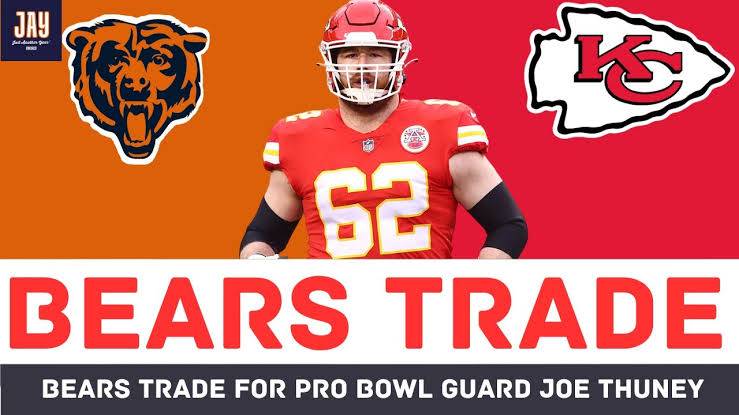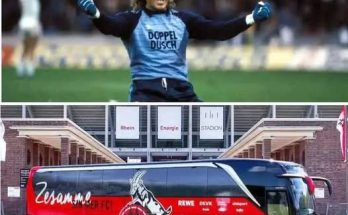The Chicago Bears have made a significant move in the NFL offseason, trading for a Pro Bowl wide receiver in an effort to strengthen their offensive lineup. This trade represents not just a strategic decision but a clear signal of the Bears’ intentions to build a potent, explosive offense capable of competing at the highest levels in the NFC. With the Bears’ offensive struggles in recent years, particularly in the passing game, this move brings fresh hope to a fanbase eager for success.
The deal is one of the most significant moves of the offseason and comes with immense expectations. The Bears, who have been in the midst of a rebuilding phase, are looking to capitalize on the strong potential of their young quarterback, Justin Fields. Fields, the team’s first-round pick in the 2021 NFL Draft, has shown flashes of brilliance but has also faced challenges due to a lack of reliable weapons around him. This trade represents a clear effort to provide him with the necessary resources to develop into a franchise quarterback.
The player acquired in this deal, a Pro Bowl-caliber wide receiver, immediately becomes the focal point of the Bears’ receiving corps. This acquisition is not just about adding another piece to the puzzle; it’s about giving Fields a true go-to target who can stretch the field, make contested catches, and elevate the overall performance of the offense. The importance of a top-tier wide receiver in today’s NFL cannot be overstated, especially for a young quarterback still finding his rhythm.
This trade reflects the front office’s commitment to supporting Fields and providing him with every opportunity to succeed. Over the past few seasons, the Bears have been searching for the right mix of talent and leadership on offense, and this trade is the latest effort in that direction. While the Bears have made moves to improve their defense in recent seasons, the focus has now shifted squarely to building a high-powered offense that can keep pace with the top teams in the NFC.
One of the main factors that made this trade possible was the team’s cap space and the willingness to part with some draft capital. While the Bears have a strong foundation in their defense, the offense has been a weak point for much of the past decade. By investing in a proven commodity like a Pro Bowl wide receiver, the Bears are acknowledging that they need to be more aggressive in addressing their offensive needs.
The player acquired in the deal is no stranger to high expectations. Having earned Pro Bowl honors multiple times during his career, he has consistently been one of the most productive wide receivers in the league. His combination of size, speed, and route-running ability makes him a nightmare for opposing defenses. He is capable of making plays all over the field, whether it’s stretching the field with deep routes, making tough catches in traffic, or providing a reliable target on third down. His skill set will complement Fields’ strengths, especially his ability to throw deep balls and extend plays with his legs.
For Fields, having a legitimate No. 1 wide receiver is a game-changer. Over his first two seasons in the league, Fields has had to make do with a patchwork group of receivers. While there have been flashes of talent, the overall lack of a true playmaker has hindered his development. Now, with this new addition, Fields will have a proven weapon to rely on, something that could elevate his game to the next level.
In addition to the immediate benefits for Fields, the trade has broader implications for the Bears’ offense. The addition of a Pro Bowl receiver should make life easier for the team’s other skill players as well. With opposing defenses forced to pay more attention to the new playmaker, other receivers and running backs will have more opportunities to make plays. This could help open up the run game, where the Bears have shown promise in recent seasons, especially with running back David Montgomery. The improved balance between the run and pass game will make the Bears’ offense more unpredictable and difficult to defend against.
The trade also sends a clear message to the rest of the NFC North and the entire league: the Bears are serious about competing. In a division that has seen the Green Bay Packers dominate for much of the past decade, the Bears have been in a constant state of flux, struggling to find their footing. But with this trade, they are signaling that they are ready to challenge for the division crown and beyond. The team’s front office is clearly committed to putting a competitive product on the field, and the addition of a top-tier wide receiver is one of the most direct ways to achieve that goal.
Looking at the broader picture, the Bears’ trade also highlights the changing dynamics of the NFL. In recent years, the importance of having a high-quality receiving corps has grown exponentially. Quarterbacks are expected to deliver the ball quickly and accurately, and wide receivers are expected to be playmakers who can turn short passes into long gains or make difficult catches in tight coverage. The Bears’ move to acquire a Pro Bowl receiver is part of a larger trend in the league, where teams are putting greater emphasis on offensive firepower to compete in an era of high-scoring games.
In terms of the logistics of the trade, the Bears gave up a combination of draft picks to secure the services of the Pro Bowl receiver. While giving up draft capital can be a risky move for any team, it’s one that makes sense for the Bears in their current situation. With Fields in place as the quarterback of the future, the team is in a win-now mode, and the addition of a proven receiver gives them a better chance of succeeding in the short term. The Bears’ front office will hope that this trade provides the necessary spark to jumpstart their offense and put them back on the map as a contender in the NFC.
As for the player who was traded to the Bears, the expectations are high. He comes to Chicago with a track record of success, and the pressure will be on him to continue that level of play. However, with his skill set and experience, there’s every reason to believe he can thrive in the Bears’ offense. He will need to quickly develop chemistry with Fields, but given his proven abilities, there’s confidence that he will be able to make an immediate impact.
The Bears’ trade for the Pro Bowl wide receiver is just one piece of a larger puzzle. The team still has areas to address, particularly along the offensive line, where they have struggled to protect Fields at times. However, this trade is a step in the right direction and gives the Bears a much-needed boost as they look to build a more potent offense. With a young quarterback, a revamped receiving corps, and a defense that remains solid, the Bears are positioning themselves to be a much more competitive team in the upcoming season.
For fans of the Chicago Bears, this trade represents a new era of hope and optimism. After years of mediocrity and frustration, the team is making bold moves to ensure they are competitive in the modern NFL. The addition of a Pro Bowl receiver, combined with Fields’ development, has the potential to transform the offense and give the Bears the offensive firepower they’ve long been lacking. Whether this trade ultimately leads to playoff success remains to be seen, but it’s a clear indication that the Bears are willing to do whatever it takes to return to relevance in the NFC North and beyond.
In conclusion, the Chicago Bears’ decision to trade for a Pro Bowl wide receiver is a pivotal moment in the team’s journey toward rebuilding and competitiveness. This move not only improves their offense but also sets the stage for a new era of success. With Fields at the helm, a revamped receiving corps, and a commitment to building a high-powered offense, the Bears are laying the foundation for what could be an exciting future. While challenges remain, the Bears have taken a significant step in the right direction, and their trade for a Pro Bowl receiver has the potential to propel them back into contention in the NFC.



